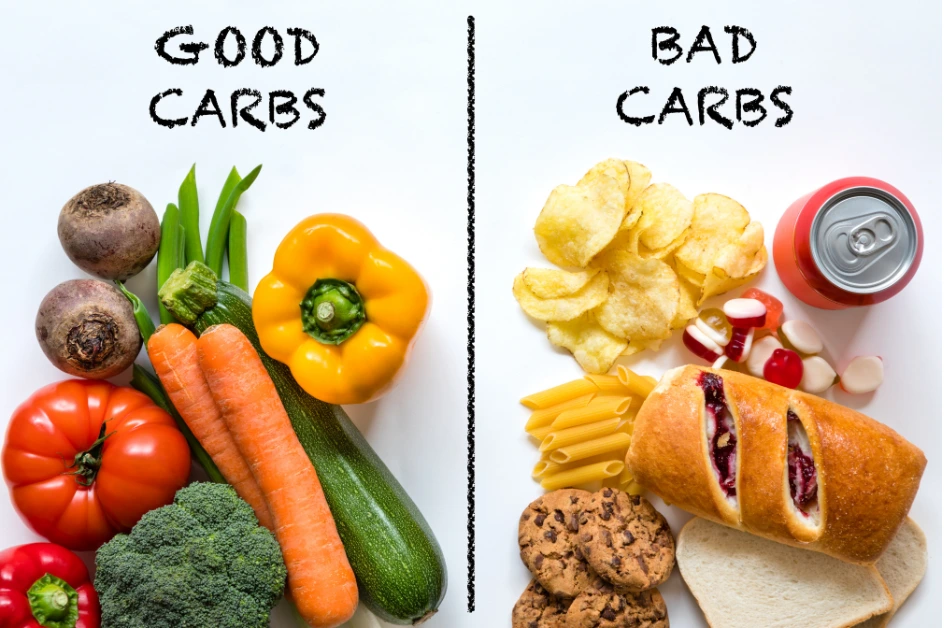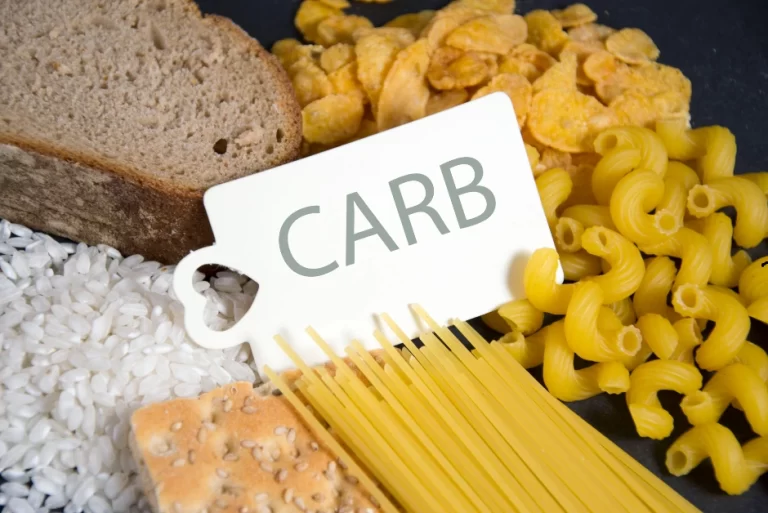This question comes to the mind of all those who either want to lose weight or gain weight. Carbs are an important part of a healthy diet. Carbohydrates are a kind of macronutrient, which are molecules in your body that provide energy in the form of calories. Carbohydrate-rich meals are turned into sugar, which gives glucose, a vital energy source, to your body. Carbohydrates are an integral part of a nutritious diet.
There are two forms of carbohydrates: tough and easy. Carbohydrates that break down fast are called “simple carbs.” complex carbohydrates are less processed, take longer to digest, and include a lot of dietary fiber. Processed and prepared meals often include refined sugar and artificial sweeteners.
Some types of carbohydrates are better for you than others. Find out how many carbs you need and which carbs to avoid.
Because carbohydrates include a wide variety of nutrients, they are an important part of a well-balanced diet. Carbohydrates, on the other hand, aren’t all the same.
How to include nutritious carbs into a balanced diet?
Fruits and vegetables that are high in fiber should be consumed first. Whole, fresh, frozen, or canned sugar-free fruits and vegetables are ideal. Fruit juices and dried fruits are other viable solutions. Still, they are higher in calories due to their concentrated natural sugar content. Fiber, water, and bulk in whole fruits and vegetables help you feel full while eating fewer calories.
Whole grains are the way to go. Whole grains contain more fiber and other important minerals than processed grains, such as B vitamins. Parts of the grain, as well as minerals and fiber, are removed during the refinement process.
Dairy products that are low in fat should be eaten. Dairy products, such as milk, cheese, yoghurt, and other dairy products, are high in calcium and protein and vitamins and minerals. Reduce your calorie and saturated fat consumption by opting for low-fat versions. Dairy products with added sugar should also be avoided.
Increase your legume intake. Legumes are high in protein and maybe a better choice than meat, which is higher in saturated fat and cholesterol. They’re rich in folate, potassium, iron, magnesium, good fats, and fiber while low in fat. Beans, peas, and lentils are examples of legumes, among the most varied and nutritious foods available.
It is best to avoid sugar substitutes. In small amounts, adding sugar is unlikely to be harmful. Adding sugar to your diet, on the other hand, provides no health advantages. According to the American Dietary Guidelines, added sugar amounts to less than 10% of your daily calories.
As a result, pick your carbs carefully. Limit your intake of added sugar and processed carbohydrates. Sugary beverages, chocolates, and sweets provide a lot of calories but little nutrition. Consume more fruits, veggies, and healthy grains instead.
How many carbs do you eat daily?

According to the American Dietary Guidelines, carbohydrates should account for 45 to 65 per cent of your total daily calories.
Carbohydrates should account for between 900 and 1,300 calories per day if you consume 2,000 calories per day. This equates to 225–325 grams of carbs each day.
Because counting carbohydrates isn’t always practicable, the American Diabetes Association recommends using this easy technique to guarantee you receive the proper quantity of carbs at each meal:
Draw a vertical line across the center of the plate. Then, to split the plate into three parts, draw a horizontal line across one side.
Spinach, carrots, lettuce, green cabbage, and mushrooms are examples of non-starchy vegetables that should be consumed in considerable quantities.
The Nutrition Facts label may reveal the amount of carbohydrates in packaged meals. Total carbs, which comprise starches, fiber, sugar alcohols, naturally occurring and added sugars, are included on the label. Real fiber, soluble fiber, and sugar may all be listed individually on the label.
Fill one of the smaller pieces with starchy vegetables like potatoes or winter squash and grains like whole-wheat pasta or brown rice. Other legume choices include black peas and pinto beans.
Protein should also be included as a small component. Skinless chicken or turkey, salmon or catfish, and thin cuts of beef, to mention a few, are all low-fat options.
- On the side, place a tiny bit of fruit or low-fat dairy.
- Olive oil, avocados, seeds, and almonds are all good sources of healthy fats.
- Low-calorie beverages include water, unsweetened tea, and coffee.
Carbs and Their Health Consequences
Despite their poor stigma, Carbohydrates are essential for your health for a variety of reasons.
Energy
Carbohydrates are the primary fuel source for your body. During digestion, sugars and starches are broken down into simple sugars. Blood sugar is formed when taken into your circulation (blood glucose).
Glucose enters your body’s cells with the aid of insulin. Whether you’re running or merely breathing, your body demands glucose for energy. It uses it to power all your motions. Excess glucose is stored for later use in the liver, muscles and other tissues or converted to fat.
Defending yourself against illness
Gut health also necessitates the use of fiber. According to several studies, whole grains and dietary fiber from whole foods may help lower your risk of cardiovascular disease. Fiber might also help reduce obesity and type 2 diabetes.
Controlling your weight
Contrary to common belief, there is no evidence that a high-carbohydrate diet causes weight gain or obesity. It’s been proven that eating enough fruits, veggies, and whole grains will help you maintain a healthy weight. Their high fiber and bulk content aid weight reduction by making you feel full while consuming fewer calories.
Carbohydrates and Their Effects on Health Carbohydrates, despite their poor connotation, are essential for your health for various reasons.
How to Calculate Your Daily Carbohydrate Intake
Removing the most problematic carb sources from your diet, such as refined wheat and added sugar, may be enough to get you started on the road to better health.
To get the metabolic advantages of low-carb diets, you must also lower your carbohydrate consumption from other sources.
There have been no scientific studies that explain how to tailor a carbohydrate diet to a person’s specific requirements. The following sections discuss what some dietitians believe about carbohydrate intake and weight loss.
What are the risks of following a low-carbohydrate diet?
Proceed with care if you’re trying to reduce carbs from your diet. If you substantially reduce your carbohydrate intake, you may notice symptoms like:
- Dizziness
- Exhaustion
- Weakness.
- Headaches.
- Constipation
It’s preferable to stick to a diet that emphasizes overall healthy eating rather than carbohydrate restriction. Although low-carb diets claim to aid weight loss, some of them may deprive you of essential nutrients. Consult your doctor or a dietitian before starting a weight-loss programmer or changing your eating habits. Your doctor can teach you to eat the proper carbohydrates while staying away from empty calories.
It may be simple to get the required carbohydrates.
Eating the proper types of carbohydrates in the right amounts may seem more difficult than it appears, but there are some basic rules you can follow to keep on track:
Sugary beverages should be avoided. Instead of using fruit juice, use the entire fruit.
Eat whole-grain bread, pasta, crackers, and cereals instead of refined grain substitutes. Brown rice, whole barley, and oats are wonderful whole grain selections.
Replace white flour items like pasta and bread with whole wheat alternatives, or go for less processed high-fiber grains like those listed above.
What foods are high in sugar?
Carbohydrates are best obtained from complex carbohydrates such as starch and fiber and natural sugars found in fresh fruits and vegetables.
As much as possible, stay away from processed and added sugars. These meals are rich in calories but lack nutrients, making them “empty” calories. Meals with added sugar have less nutrients than foods that include naturally occurring sugars.
Do you know what to avoid?
On nutrition labels, keep an eye out for the following sugary sweeteners: Granulated sugar with corn syrup sweetener Corn syrup is made from dextrose and concentrated fruit juice.

- Fructose
- Corn syrup with a lot of sugar
- Honey lactose
- Sugar should be flipped on its side.
- Maltose
- Syrup of malt
- Raw sugar, molasses sugar
- Sucrose syrup
Limit your consumption of sweetened foods to a once-in-a-while indulgence. Remember that the components on food labels are presented in decreasing order of amount, from most to least. Foods with a greater concentration of these sweeteners in the ingredient list or foods with various sugars will contain more added sugar.
What foods are high in fiber?
Fiber has some health benefits. According to the Mayo Clinic, A high-fiber diet may help you avoid constipation, decrease cholesterol, manage blood sugar, and reduce your risk of heart disease and diabetes. If you’re under 50, you should consume 38 grams of fiber per day for men and 25 grams for women. If you’re over 50, you should consume roughly 30 grams of protein per day for men and 21 grams of protein per day for women.
Dietary fiber may be found in the following foods:
Look at the nutrition label; Foods with 3-5 grams of fiber or more are considered high fiber. Fruits, vegetables, and grains have taken whole proteins in beans, nuts, and seeds. Whole grains should be the major ingredient in bread, crackers, pasta, and other baked goods. Brown rice, wild rice, buckwheat, millet, quinoa, and oats are all whole grains that can be steamed or cooked.


